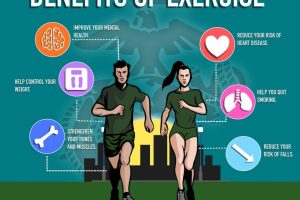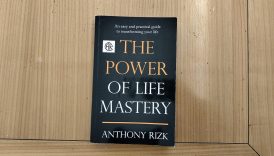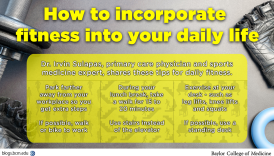The Importance of Regular Exercise for Overall Wellness

Definition of Regular Exercise
Regular exercise refers to any physical activity that is performed consistently, typically aiming for at least 150 minutes of moderate-intensity activity each week, as recommended by health authorities. This can include a wide variety of activities such as walking, running, swimming, cycling, or participating in fitness classes. The key is consistency—building a routine that integrates movement into daily life. For instance, someone might carve out thirty minutes each day for brisk walks or join a local gym to lift weights thrice a week.
- The Importance of Regular Exercise for Overall Wellness
- Definition of Regular Exercise
- Benefits of Regular Exercise
- Physical Health Benefits
- Weight Management
- Improved Cardiovascular Health
- Mental Health Benefits
- Stress Reduction
- Enhanced Mood and Cognitive Function
- Disease Prevention
- Lower Risk of Chronic Diseases
- Boosted Immune System
- Enhanced Physical Fitness
- Strength and Endurance
- Flexibility and Balance
- Increased Energy Levels
- Improved Sleep Quality
- Enhanced Productivity
- Longevity and Aging
- Slowed Aging Process
- Extended Lifespan
- Social Well-being
- Opportunities for Social Interaction
- Group Exercise Benefits
- Maintaining Healthy Habits
- Consistency and Routine
- Overcoming Barriers
- Safety and Precautions
- Proper Technique and Form
- Importance of Warm-Up and Cool Down
Benefits of Regular Exercise
The advantages of regular exercise extend far beyond physical appearance. Engaging in regular physical activity can lead to:
- Improved cardiovascular health
- Enhanced mental clarity and mood stability
- Increased energy levels throughout the day
Consider the story of a busy professional who started jogging in the morning; not only did they shed a few pounds, but their productivity soared at work due to better focus. Ultimately, regular exercise fosters a holistic sense of well-being, impacting both body and mind. Embracing this lifestyle can be transformative!
Physical Health Benefits
Weight Management
One of the most celebrated benefits of regular exercise is effective weight management. When combined with a balanced diet, physical activity helps to burn calories, making it easier to maintain a healthy weight or lose excess pounds.
- Burning Calories: Even simple activities like walking or gardening can contribute significantly to calorie burn.
- Boosted Metabolism: Consistent exercise revs up metabolism, allowing the body to burn more calories even at rest.
For example, a friend of mine began attending weekly dance classes; not only did she enjoy herself, but she also noticed her clothes fitting better within just a few months!
Improved Cardiovascular Health
Regular exercise is essential for a healthy heart. It strengthens the heart muscle, improves circulation, and lowers blood pressure, significantly diminishing the risk of heart disease.
- Stronger Heart: Physical activity increases heart efficiency.
- Reduced Risk of Stroke: Regular exercise promotes healthy blood flow and lowers cholesterol levels.
Consider the many stories of individuals who’ve turned their lives around after embracing fitness—less fatigue and a noticeable drop in heart-related health issues. It’s clear that the heart thrives on movement!
Mental Health Benefits
Stress Reduction
Transitioning from physical health benefits, it’s time to explore how regular exercise significantly enhances mental well-being, particularly in reducing stress. Engaging in physical activity stimulates the production of endorphins—often referred to as “feel-good” hormones—which naturally alleviates stress and promotes relaxation.
- Exercise as a Stress Reliever: Activities like yoga and jogging can provide a meditative-like effect, helping individuals unwind after a long day.
- Mindfulness through Movement: Focusing on physical activities can distract from daily worries, providing a mental reset.
A personal story illustrates this well; a colleague of mine took up cycling as a way to escape work pressure. The simple rhythm of pedaling transformed her stress into serene moments of clarity.
Enhanced Mood and Cognitive Function
Beyond stress relief, regular exercise is linked to an enhanced mood and improved cognitive function. Research shows that consistent physical activity can lead to lower rates of anxiety and depression.
- Boosts Self-Esteem: Accomplishing exercise goals fosters a sense of achievement.
- Sharpened Focus: Physical activity increases blood flow to the brain, enhancing cognitive abilities.
I’ve observed how friends, who incorporated jogging into their routines, reported feeling happier and more alert—it’s astonishing how exercise can uplift spirits and sharpen minds! Embracing a regular exercise regimen can be a powerful mind tonic.
Disease Prevention
Lower Risk of Chronic Diseases
Following the mental health benefits, it’s crucial to acknowledge how regular exercise plays a significant role in disease prevention, particularly in lowering the risk of chronic diseases. Engaging in consistent physical activity can help manage conditions such as:
- Type 2 Diabetes: Regular movement helps regulate blood sugar levels.
- Heart Disease: Exercise strengthens the heart and improves blood circulation.
For instance, I have a neighbor who made a lifestyle change by incorporating walking into his daily routine. After a year, his doctor noted significant improvements in his cholesterol levels, showcasing how movement can make a transformative difference.
Boosted Immune System
In addition to combating chronic diseases, regular exercise is a natural immune booster. Moderate physical activity can enhance the body’s ability to ward off illnesses.
- Enhanced Immune Function: Exercise promotes good circulation, allowing immune cells to move throughout the body more effectively.
- Reduced Inflammation: Regular workouts help manage inflammation, a key contributor to various diseases.
Friends who commit to regular gym sessions often remark how infrequently they get sick compared to sedentary peers. It’s evident that staying active is a simple yet powerful way to safeguard one’s health!
Enhanced Physical Fitness
Strength and Endurance
Building on the discussion of disease prevention, regular exercise significantly enhances overall physical fitness, particularly in strength and endurance. Engaging in resistance training, such as weightlifting, not only boosts muscle strength but also contributes to better metabolism and bone density.
- Increased Muscle Mass: Lifting weights or doing body-weight exercises helps build muscle, which is vital as we age.
- Improved Endurance: Activities like running, cycling, or swimming build cardiovascular endurance, allowing for longer and more enjoyable workouts.
I witnessed this firsthand when a friend started a simple strength training routine; over a few months, he transformed not just physically but also gained the stamina to play soccer without feeling fatigued.
Flexibility and Balance
In addition to strength and endurance, regular exercise plays a crucial role in enhancing flexibility and balance. These attributes are important for preventing injuries and improving overall functionality in daily tasks.
- Greater Range of Motion: Practices such as yoga or Pilates increase flexibility, which can alleviate muscle tension.
- Improved Balance: Activities like tai chi or stability exercises improve balance, reducing the risk of falls, especially in older adults.
After joining a yoga class, I noticed not only improved flexibility but also better posture, which has made daily activities much more comfortable. Incorporating a diverse fitness routine can lead to comprehensive physical enhancements that boost everyday performance!
Increased Energy Levels
Improved Sleep Quality
Continuing from the discussion on enhanced physical fitness, regular exercise also plays a vital role in boosting energy levels, starting with improved sleep quality. Engaging in physical activity helps regulate the sleep cycle, promoting deeper and more restful sleep.
- Faster Sleep Onset: Research shows that those who exercise fall asleep quicker.
- Quality Rest: Regular physical activity enhances sleep stages, particularly deep sleep, which is essential for recovery.
I personally experienced this myself when I began jogging every morning; not only did I notice a boost in my daily energy, but I also slept better at night—a win-win situation!
Enhanced Productivity
With improved sleep comes heightened productivity. Regular exercise equips individuals with more energy throughout the day, positively affecting both performance at work and ability to focus on tasks.
- Mental Clarity: Physical activity stimulates brain function and creativity.
- Motivation Increase: Feeling energized encourages a proactive approach to daily challenges.
A colleague of mine swears by her lunchtime workouts—she says that after breaking a sweat, she returns to her desk more focused and ready to tackle the afternoon. It’s remarkable how staying active can fuel productivity and energize everyday life!
Longevity and Aging
Slowed Aging Process
Following the discussion on increased energy levels, it’s important to highlight how regular exercise can contribute to longevity and the aging process. Engaging in physical activity can slow down the effects of aging by maintaining muscle mass, enhancing skin elasticity, and promoting overall vitality.
- Cellular Aging: Regular workouts can positively impact cellular health, helping to slow down oxidative stress, which contributes to aging.
- Joint Health: Staying active strengthens muscles around joints, reducing stiffness and discomfort as one grows older.
Personally, I’ve seen how a neighbor in her sixties remains youthful and spry thanks to her daily morning yoga. It truly emphasizes how exercise can be a secret weapon against aging!
Extended Lifespan
Moreover, numerous studies suggest that a consistent exercise routine correlates with an extended lifespan.
- Reduced Mortality Risk: Regular physical activity is linked to lower mortality rates, particularly from chronic diseases.
- Quality of Life: Beyond longevity, exercise contributes to a better quality of life with increased mobility and independence in later years.
I recall reading about a centenarian who attributes her long life to daily walks and gardening, proving that embracing an active lifestyle can lead to living not just longer, but healthier and happier as well. The benefits of exercise truly stretch from the present moment to the twilight years!
Social Well-being
Opportunities for Social Interaction
Building on the benefits of longevity and aging, one cannot overlook the vital aspect of social well-being that comes from regular exercise. Engaging in physical activities often opens up numerous opportunities for social interaction, which can significantly enhance one’s quality of life.
- Community Connections: Whether it’s a running club, a dance class, or a local sports team, exercising provides a natural environment to meet new people and build friendships.
- Shared Goals: Working out in groups fosters camaraderie as members encourage each other to reach fitness milestones.
For instance, I started attending a local boot camp, and not only did I get fitter, but I also made lasting friendships with fellow participants who share similar health goals.
Group Exercise Benefits
Participating in group exercise not only makes workouts more fun but also offers several psychological benefits.
- Increased Motivation: Seeing others work hard can boost personal motivation and accountability.
- Enhanced Enjoyment: Group settings create a lively atmosphere, often leading to laughter and stress relief.
A friend of mine found that during her Zumba classes, she was not only losing weight but also enjoying the social aspect of dancing with a vibrant group of women. It’s evident that exercise is more than just a physical endeavor; it’s a catalyst for fostering relationships and a sense of community. Embracing physical activity can truly enrich one’s social life!
Maintaining Healthy Habits
Consistency and Routine
Transitioning from the importance of social well-being, maintaining healthy habits is crucial for long-term benefits derived from exercise. Establishing consistency and routine is the cornerstones of a successful fitness journey.
- Set a Schedule: Block out specific times for workouts in your calendar, treating them as non-negotiable appointments.
- Start Small: Begin with achievable goals to develop a habit. Even short, daily workouts can contribute significantly over time.
I remember when I started my morning runs. At first, I aimed for just 15 minutes, gradually increasing my time as it became part of my daily routine. Over time, I noticed that setting an early alarm wasn’t so daunting anymore!
Overcoming Barriers
Despite the best intentions, obstacles can arise that hinder consistency. Recognizing and addressing these barriers is essential for maintaining exercise habits.
- Identify Common Barriers: Pinpoint challenges such as time constraints, lack of motivation, or facilities.
- Develop Solutions: For instance, if time is tight, consider shorter, high-intensity workouts or active family outings.
A good friend of mine faced the challenge of juggling work and family commitments, so she opted for home workout videos to fit her busy lifestyle. By recognizing her barrier and adapting, she kept her fitness journey alive. Emphasizing consistency and addressing obstacles can lay a solid foundation for lifelong healthy habits!
Safety and Precautions
Proper Technique and Form
Transitioning from maintaining healthy habits, the importance of safety and precautions in exercise cannot be overstated. First and foremost, using proper technique and form during workouts is essential to prevent injuries.
- Focus on Alignment: Ensuring your body is aligned correctly during exercises can minimize strain on muscles and joints.
- Seek Guidance: If you’re unsure about your form, consider working with a trainer or following instructional videos.
When I first started lifting weights, I struggled with form and nearly tweaked my back. Thankfully, I sought advice from a knowledgeable friend, which saved me from potential injury and allowed me to progress more safely.
Importance of Warm-Up and Cool Down
In addition to technique, incorporating warm-ups and cool-downs into your routine is crucial for safety.
- Warm-Up: Warming up prepares the body for exercise by increasing blood flow to the muscles. Think of five to ten minutes of light cardio or dynamic stretching.
- Cool Down: After your workout, take time to stretch and lower your heart rate, which aids in recovery.
I always include a cooldown after my runs, and I’ve noticed it significantly reduces soreness the next day. Prioritizing safety through proper technique and the essential warm-up and cool-down routines can foster a more enjoyable and injury-free fitness journey!





